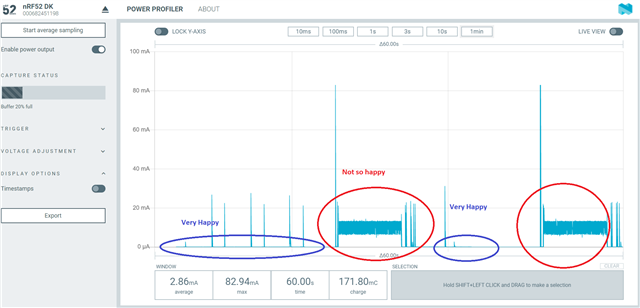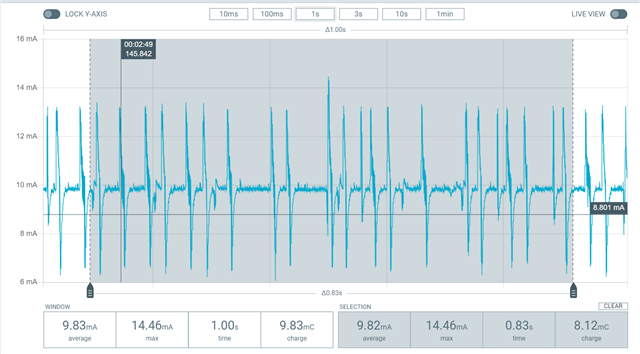Hi Everyone,
I have been developing with nrf52840 for quite sometime using Arduino. I would like to explore nrf5 Sdk for Zigbee and Thread because I want to use my nrf52840 with Zigbee. I have custom board from ebyte.com E73-2G4M08S1C.
I took example from nrf5sdk 4.1.0 version. I use the \nRF5_SDK_for_Thread_and_Zigbee_v4.1.0_32ce5f8\examples\zigbee\experimental\multi_sensor. It is the non freertos version of multi sensor. I modified the example as I just need the temperature reading. I just remove the code related to the pressure.
The example work with the Zigbee hub( it is called hubitat). This is not important. I just want to give some context that the stack work as expected.
I do observe one issue. When the nrf52840 start and has not join any hub (coordinator), it consume 17 mA. Once joined, the current consumption is very acceptable for my need. They are in the low micro Amp range. On a nrf52840 that has joined (already in network), during start up, it consume the same 17 mA for a few seconds. I do not clear the persistence storage on reboot. I believe that again once the nrf52840 joined the Zigbee mesh, it work properly as a sleepy end device.
I had worked on Zigbee on different platform. I am aware during join or rejoin process, the nrf52840 may need to have its radio active either sending beacon request or listening on beacon response. My question is that during this time, is there anyway in the stack where we can tune the joining process to minimize the current consumption. I am using energy harvester. The current generated is good enough to operate the nrf52840 once it got over the process that require the 17mA. The harvester cannot supply 17mA continuously for a few seconds during this joining process. I also open to suggestion if this process can be spread out so that the nrf52840 have a chance to sleep. It will give the harvester to accumulate enough power to run the next try of join/rejoin.
Thanks for your help in advance. If you are aware of any solution, I would appreciate it if you can share it with me.
br
Iman




